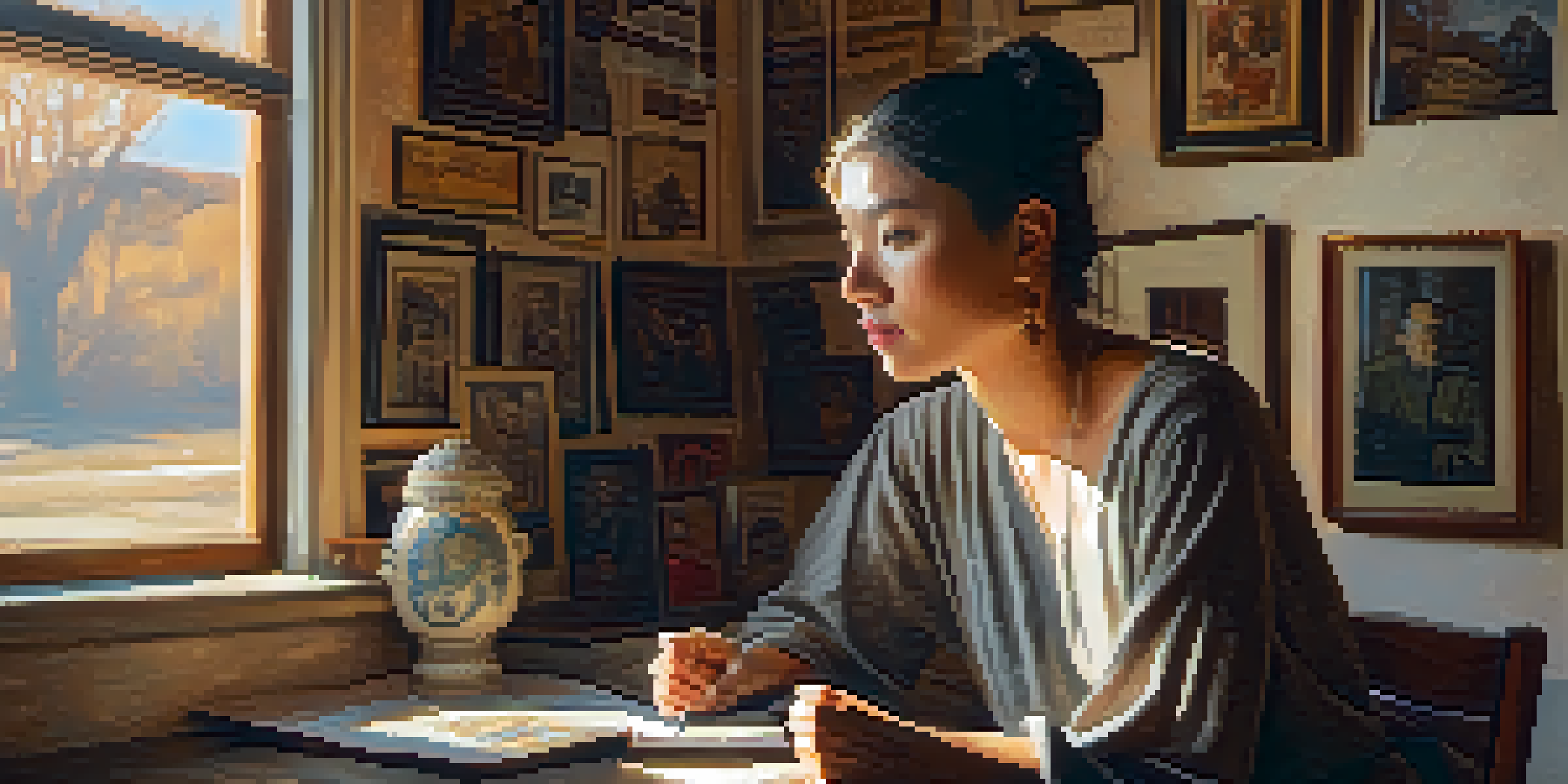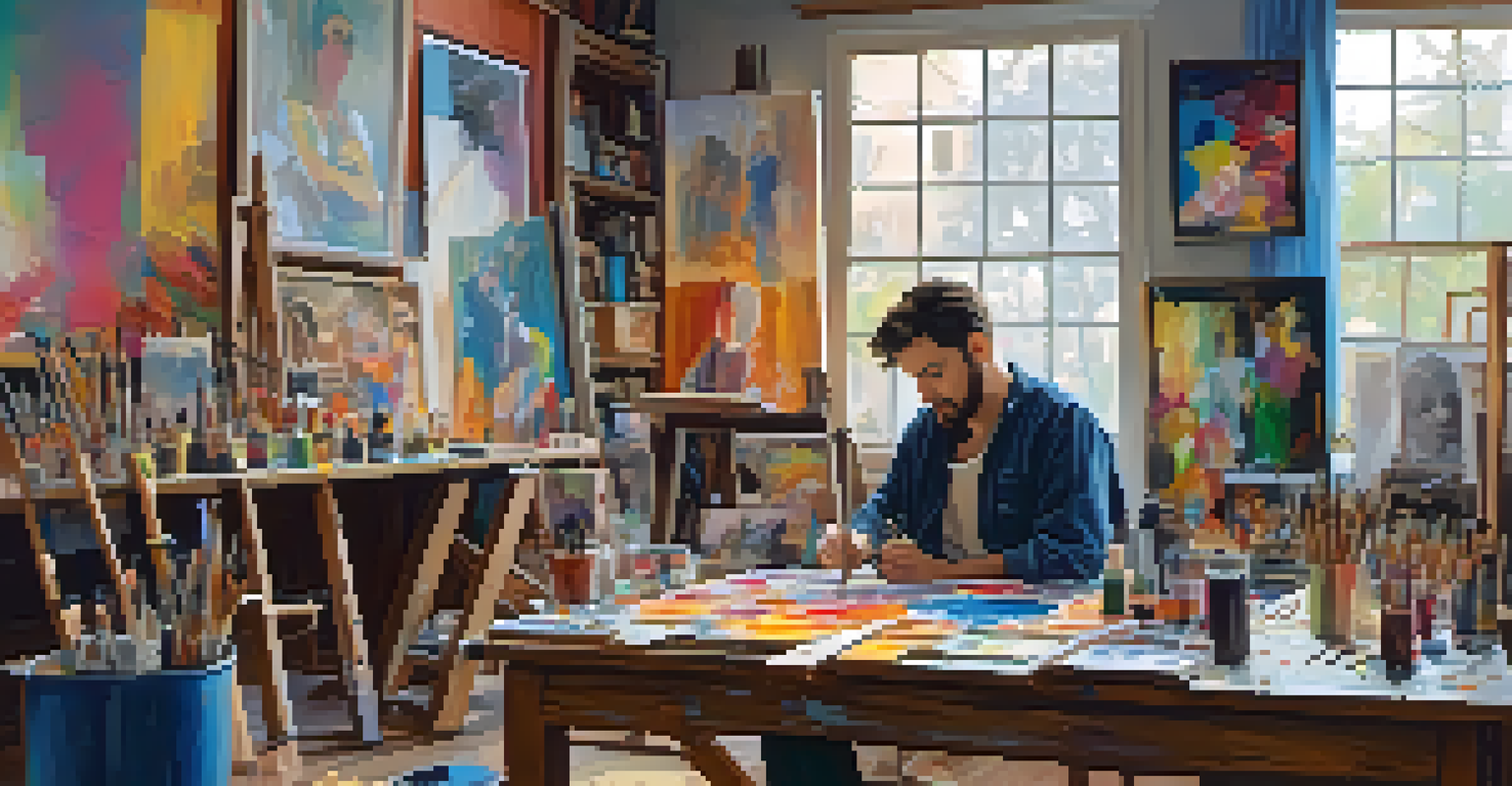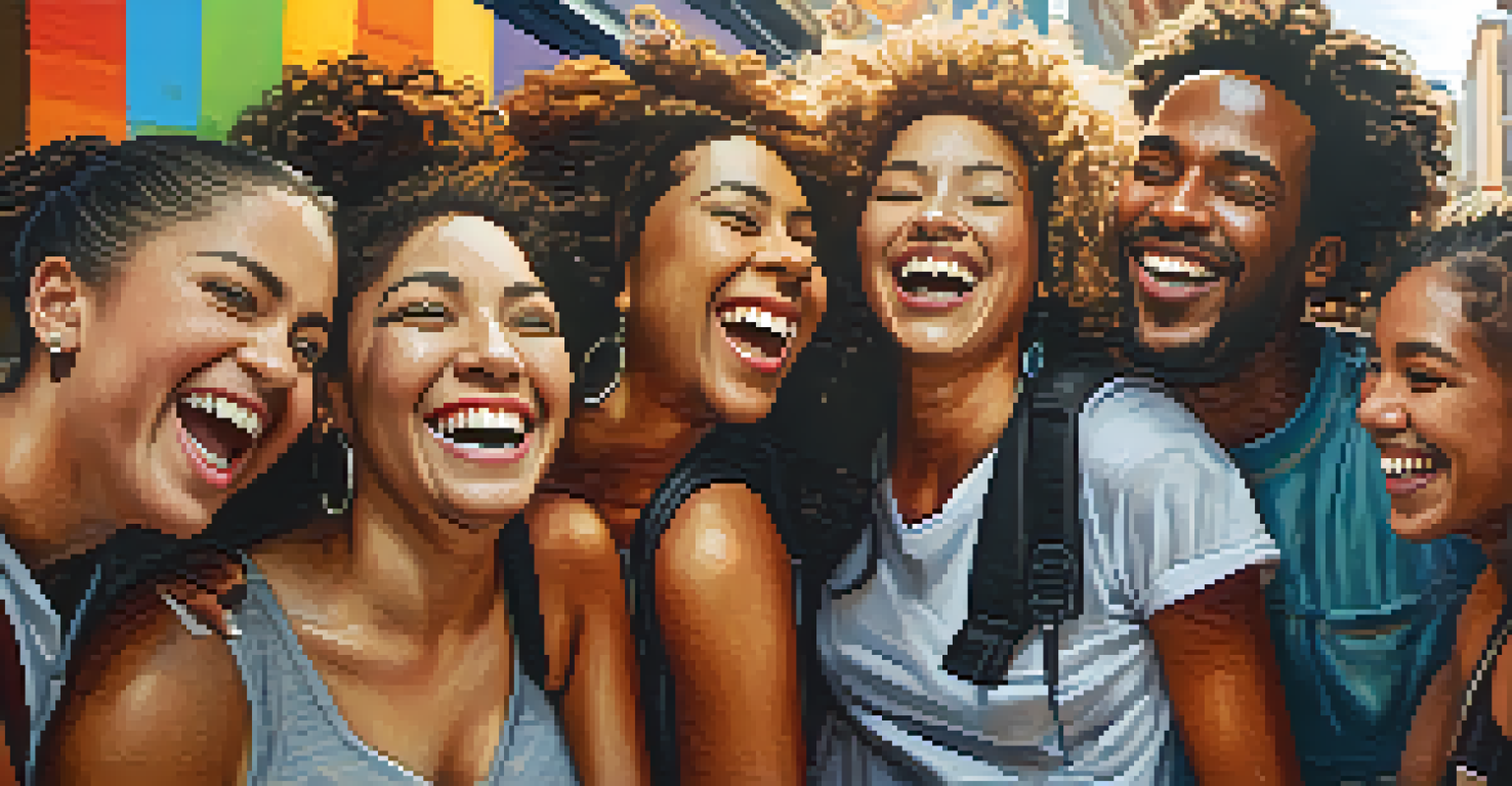The Role of Portraiture in Expressing Personal Identity

Understanding Portraiture and Its Significance
Portraiture is more than just a visual representation; it's an art form that captures the essence of a person. It reflects the subject's personality, emotions, and even their social status. By portraying individuals in specific ways, artists can convey deeper messages about identity and self-perception.
A portrait is not made in the camera but on either side of it.
Throughout history, portraits have served various purposes, from glorifying royalty to documenting the lives of everyday people. Each brushstroke or photograph can tell a unique story about the subject's life experiences and values. This significance makes portraiture a powerful tool for expressing personal identity.
In essence, portraiture becomes a mirror, reflecting not just the physical appearance but also the internal world of the individual. It allows both the artist and the viewer to engage with the complexities of identity in a nuanced manner.
Cultural Influences on Portraiture
Culture plays a crucial role in shaping how individuals perceive themselves and their identities. Different cultures have distinct styles, symbols, and meanings associated with portraiture, which can influence how people express their identities. For instance, traditional portraits in some cultures might emphasize familial ties, while others focus on individual achievements.

These cultural nuances can be seen in various forms of portraiture, from classical paintings to modern photography. An artist may choose specific clothing, backgrounds, or poses to reflect cultural heritage and personal significance. This layering of meaning enriches the viewer's understanding of the subject's identity.
Portraiture Reflects Personal Identity
Portraiture captures not only the physical appearance of individuals but also their emotions, social status, and personal stories.
Ultimately, cultural influences result in a diverse tapestry of portrait styles, each carrying its own narrative. By examining these differences, we gain insight into how identity is constructed and communicated across various societies.
The Evolution of Portraiture Through Time
As society evolves, so does the art of portraiture. Historically, portraits were often reserved for the elite, showcasing wealth and power. However, with the advent of photography and modern art movements, portraiture has become more accessible to everyone, allowing for broader expressions of identity.
Every portrait that is painted with feeling is a portrait of the artist, not of the sitter.
In contemporary times, artists experiment with various mediums and styles to challenge traditional notions of portraiture. Digital art, for example, allows for innovative representations that can blend reality and fantasy, reflecting the multifaceted nature of personal identity in the modern world.
This evolution highlights how portraiture continues to adapt to the changing societal landscape. Today, it serves as a platform for marginalized voices, enabling individuals to reclaim their narratives and redefine their identities.
The Role of Emotion in Portraiture
Emotion is a powerful element in portraiture, as it can profoundly influence how identity is expressed. Artists often capture genuine feelings in their subjects, whether through facial expressions, body language, or settings. These emotional cues can create a deeper connection between the viewer and the portrayed individual.
For instance, a portrait that captures a moment of joy can convey a sense of vitality and optimism, while one depicting sadness may evoke empathy and reflection. This emotional resonance allows portraiture to transcend mere visual representation, inviting viewers to engage with the subject on a personal level.
Cultural Influences Shape Portraits
Different cultures contribute unique styles and meanings to portraiture, influencing how identities are expressed and perceived.
Ultimately, the emotional depth in portraiture enriches our understanding of identity. It illustrates that identity is not just about how we look but also about how we feel and experience life.
Self-Portraiture as a Tool for Identity Exploration
Self-portraiture is a unique form of expression that allows individuals to explore and present their identities. By creating self-portraits, artists can reflect on their personal experiences, beliefs, and emotions. This introspective process can lead to greater self-awareness and understanding.
Through self-portraiture, individuals have the freedom to portray themselves as they wish, whether that means emphasizing certain traits or experimenting with different styles. This creative license fosters a sense of empowerment, as artists take control of how their identities are represented.
Moreover, self-portraiture can serve as a conversation starter, inviting viewers to reflect on their own identities. It encourages a dialogue about the complexities of personal identity and the ways it can be expressed artistically.
The Impact of Technology on Portraiture
Technology has revolutionized portraiture, offering new tools and platforms for artists to express identity. From digital cameras to social media, technology makes it easier for individuals to create and share their portraits with a global audience. This accessibility democratizes art, allowing diverse voices to contribute to the conversation about identity.
Moreover, digital editing software enables artists to manipulate images in ways that were previously unimaginable. This ability to alter and enhance portraits can lead to new interpretations of identity, challenging the traditional notions of authenticity and representation.
Technology Transforms Portraiture
Advancements in technology have made portraiture more accessible, allowing diverse voices to engage in the conversation about identity.
As technology continues to evolve, it reshapes how we perceive and engage with portraiture. It encourages a more inclusive understanding of identity, highlighting the impact of the digital world on self-expression.
Conclusion: Portraiture and Personal Identity Today
In conclusion, portraiture plays a vital role in expressing personal identity. It serves as a reflection of who we are, shaped by cultural influences, emotional depth, and technological advancements. Each portrait tells a unique story, inviting viewers to explore the complexity of identity.
As we move forward, the importance of portraiture in understanding personal identity will likely continue to grow. Artists will keep pushing boundaries, experimenting with new techniques and perspectives to capture the essence of individuals in our ever-changing world.

By appreciating the nuances of portraiture, we not only gain a deeper understanding of ourselves but also foster empathy and connection with others. In this way, portraiture remains a timeless and powerful medium for exploring and expressing personal identity.